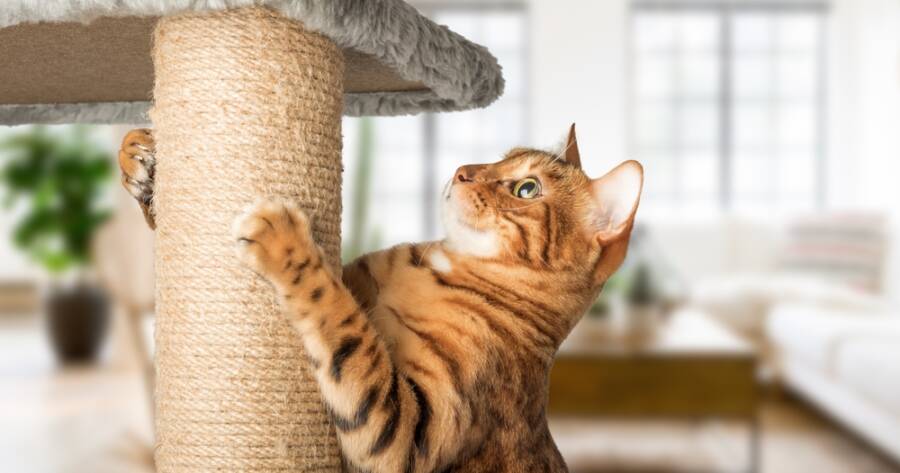Scratching is a natural, healthy behavior for cats, but when it’s directed at your sofa or favorite chair, it can be frustrating. Declawing isn’t just unnecessary, it’s painful and often leads to long-term behavioral issues. The good news? There are positive, humane ways to redirect your cat’s claws without sacrificing your furniture or your bond.
Understand Why Cats Scratch in the First Place
Scratching isn’t misbehavior—it’s instinct. Cats scratch to mark territory, stretch their muscles, sharpen their claws, and relieve stress. It’s how they communicate and care for their bodies. If your cat is scratching the furniture, it’s likely because the texture is satisfying or it’s conveniently located.
Rather than trying to stop scratching altogether, the goal is to redirect it. Your cat needs an appropriate outlet for this behavior. By understanding the motivation behind the action, you can create an environment that satisfies their natural needs without causing damage to your home.
Offer Scratching Alternatives That Actually Appeal
If you want your cat to stop scratching your furniture, you need to give them something better. Start with a few types of scratching surfaces—like sisal-wrapped posts, cardboard pads, or carpeted ramps—to see what your cat prefers. Pay attention to whether they like vertical or horizontal surfaces and match that in your scratcher selection.
Placement matters just as much. Put the scratcher near the furniture they usually target, especially where they like to nap or stretch. Encourage use by rubbing catnip on it or dangling a toy nearby. Once they begin using it consistently, you can slowly move it to a more convenient location in the room.
Make Furniture Less Tempting to Claw
While you’re encouraging new habits, make your furniture less appealing to scratch. Use deterrents like double-sided tape, which feels unpleasant on paws, or furniture-safe sprays with scents cats dislike, such as citrus or eucalyptus. Covering the area with a blanket or slipcover can also help interrupt the routine.
Consistency is key. The more your cat is blocked or deterred from using the furniture, the more they’ll explore the scratchers you’ve provided. Just be sure the alternative scratching options are always easy to find and placed where your cat already likes to spend time.
Use Positive Reinforcement to Encourage Good Habits
Reward your cat when they use the scratching post—even with simple praise, a treat, or a quick play session. Positive reinforcement teaches them that scratching the “right” spot is not only allowed but also brings good things. Never yell or punish your cat for scratching the wrong place—it can increase anxiety and lead to sneaky or destructive behavior.
Training takes patience, especially with cats, but repetition works. Every time they use their scratcher instead of the couch, they’re forming a habit. Celebrate small wins and stay consistent. Over time, the new behavior will stick, and your furniture will stay intact.
Keep Your Cat’s Claws Trimmed
Long, sharp claws can cause more damage and may tempt your cat to scratch more frequently. Regular trimming helps reduce the need to wear claws down through scratching and keeps accidental damage to a minimum. Use cat-safe nail clippers and aim to trim just the sharp tip every couple of weeks.
If your cat is fidgety or nervous, start with just a few claws at a time and offer treats or affection afterward. If trimming feels too stressful, a groomer or vet can help. Pairing routine nail care with proper scratching outlets is a powerful combination for protecting your home and keeping your cat comfortable.
A Win-Win for You and Your Cat
Stopping destructive scratching isn’t about eliminating the behavior; it’s about giving it direction. With the right tools, a little patience, and plenty of encouragement, you can protect your furniture while honoring your cat’s natural instincts. A cat that scratches the right surfaces is not only happier, but they’re also more confident and secure in their space.
